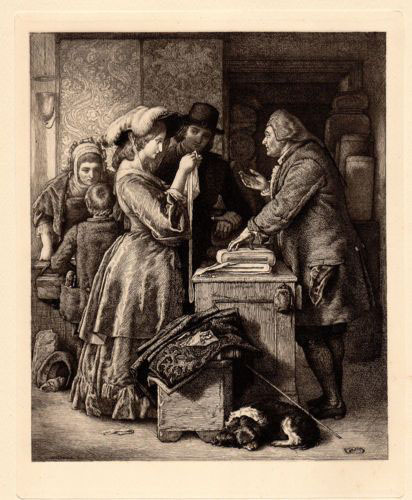Tying the Knot
Marriage Practices in the New Community

The settlers in the early settlement of Perth, and surrounding townships came from diverse religious backgrounds. Rev. William Bell arrived in 1817 to minister to the Scottish settlers from Edinburgh but soon decided to serve a much larger community. His friend Rev. William Smart, located in Brockville, had convinced the settlers during the preceding winter that they should set aside their differences and petition for a minister from the Edinburgh diocese. When he arrived, and for many years later, he conducted marriages throughout the district for many of the Presbyterian faith. His careful records provide many with records of marriages and baptisms that might have been lost in time.
Although a couple could opt for the publishing of the “banns” in a church, in the early years many marriages were often performed by magistrates, or commanders of military posts. Later, Rev. Bell records that “Ministers were few in number, and often far distant. Now, none but clergymen are permitted to marry, unless there be none nearer than 18 miles; but, in that case, a magistrate is still permitted to solemnize marriages according to the form of the church of England, provided, he advertised his intention and the name of the parties, in some public house in the township three weeks before the marriage takes place. Ministers of Presbyterian, Calvinistic and Lutheran congregations have the same privileges of celebrating marriages within the bounds of their own communities as minister of the church of England have. This privilege is also enjoyed by priests of the Romish Church. The methods of getting married are two:
- By being published the three preceding Sabaths in the church, the same as in England; or
- By special license from the Governor, in which case the marriage may be dispatched at once, before the public can be aware what is going on.
A confidential agent in every considerable town has some of these licenses ready sealed and signed by the Governor and having blanks to be filled up with the names of the parties to be married. In this settlement a license costs $6. But in other parts of the province it cost $8. Since money became scarce, they are not so much in demand; but those who can afford the expenses generally give them the preference.
William Bell’s early church records were transcribed by J.R. Ernest Miller and are available at https://kingston.ogs.on.ca/publications/kingston-branch-publications-price-list/
The Presbyterian Church Archives in Toronto holds microfilms.
https://presbyterianarchives.ca/wp-content/uploads/2016/06/FA4000P.pdf .
Records for the Bathurst District are available for viewing at the Ontario Archives and for those interested in searching marriages at an early date, I found the following:
BOOK – Vol 5: Bathurst District Marriage Register 1831-1852
By Dan Walker & Fawne Stratford-Devai
Published by Global Heritage Press, Milton, 2000 (cd version 2013)
“In November of 1822 the Bathurst District was proclaimed and marriage returns for Lanark, Renfrew and Carleton Counties had to be returned to the Clerk of the Peace in the District Town of Perth. Any marriages showing a residence of the parties as Unsurveyed Lands would eventually become the townships of Admaston, Bagot, Bromley, Blythfield and Stafford. In 1838 Carleton County was removed from the Bathurst District and given the name of the Dalhousie District. However, the clerk of the Dalhousie District did not begin a separate register until 1842. Consequently, marriages returns for Carleton County from 1842 are not included in the Bathurst District Marriage Register.
The Bathurst District was abolished in May of 1849 but the Clerk continued to record marriages in the register until 1852.
https://globalgenealogy.com/countries/canada/ontario/general/resources/258006.htm
